I love all kinds of pickles, always have. I was one of those kids who would eat dill pickles and briny olives straight out of the jar. Dilly beans, however, are somewhat new to me. My Mom has been growing green beans for the past few years in her garden and making dilly beans out of them that we enjoy year round when we go to visit. It’s such a great little happy hour (or any time of the day) snack. The sourness from the vinegar, the flavor from the dill and garlic, and the crunch from the beans. So awesome! All of this got me thinking, though… what about making fermented dilly beans? I did a little research, and of course it can be done!
Fermenting Green Beans
The great thing about making fermented dilly beans versus the canned vinegar kind is that you can make them in single jar batches as you harvest the beans.
This is part of why I love fermenting, it’s so easy! No canning required to put up your harvest.
For this recipe, first you need to acquire some green beans. Some of these are from our garden and some are from our CSA veggie box.
I used a mix of green and yellow beans, with a few purple thrown in for good luck. The recipe I based this on is from the book Fermented Vegetables by Kirsten and Christopher Shockey.
This is a super awesome book and is highly recommended for anyone wanting to explore veggie ferments further.
Fermented Dilly Beans Recipe
Here is what you will need to get started with these fermented dilly beans:
- Fresh green beans to fill a quart jar
- 4-5 garlic cloves
- 2 whole flower heads of pickling dill, or 2 sprigs fresh dill and 1 Tbsp dill seeds
- 1-2 bay leaves
- 1 tsp. mustard seeds
- 1 tsp. black peppercorns
- 1 small hot pepper (optional)
Put all of these ingredients into a quart jar.
Putting the beans in lengthwise makes it look beautiful, and it also allows you to stuff in as many beans as possible.
Next, mix up a brine of 1 tablespoon Kosher or picking salt (not iodized) to 2 cups water.
Pour that brine over the beans in the jar.
Make sure all the veggies are covered with the brine and weigh them down with a weight. You can use a bag full of water as a weight, or get something like these fermenting weights.
Cover the jar with a clean cloth secured with a rubber band and put in a dark place in your kitchen.
Take a quick look at it every day or two to make sure it’s ok (I’m sure it will be, but it’s always nice to keep an eye on it!). After a week taste the beans and see if they’re to your liking.
If they’re still too crunchy, let them ferment longer, up to another week. If it’s really cold in your kitchen, it may take even longer than that.
Once they are ready, it’s time to eat! They should be delightfully salty and crunchy, the perfect addition to your next appetizer.
Fermented dilly beans are the perfect (and easy) way to preserve your harvest! Not only are they tasty, but full of gut healthy probiotics.
Keep them in the fridge or a cool cellar for months, and reach for them whenever you need a few dilly beans. We all need them from time to time!
More Fermented Vegetables
Dig a little deeper and find recipes for even more of our favorite fermented vegetables!
- Fermented Cherry Tomatoes
- Sauerkraut
- Fermented Green Tomatoes
- Fermented Asparagus with Garlic
- Fermented Cucumber Pickles
Fermented Dilly Beans
Ingredients
- 1 quart fresh green beans
- 4-5 cloves garlic
- 2 whole flower heads of dill or 2 sprigs fresh dill, or 1 Tablespoon dill seeds
- 1-2 bay leaves
- 1 teaspoon mustard seeds
- 1 teaspoon black peppercorns
- 1 small hot pepper optional
Brine
- 1 Tablespoon kosher or pickling salt
- 2 cups water
Instructions
- Pack all of these ingredients into a quart-sized mason jar. (Putting the beans in lengthwise makes it look beautiful, and it also allows you to stuff in as many beans as possible.)
- Make up a brine of 1 Tbsp. Kosher or picking salt (not iodized) to 2 cups water.
- Pour that brine over the beans in the jar. (Make sure all the veggies are covered with the brine.)
- Weigh them down with a weight. You can use a bag full of water as a weight, or get something like the awesome kit from Ferment’n.
- Cover the jar with a clean cloth secured with a rubber band and put in a dark place in your kitchen. Take a quick look at it every day or two to make sure it’s ok.
- After a week taste the beans and see if they’re to your liking.
Notes
- If, after a week, the dilly beans are still too crunchy, let them ferment longer, up to another week. If it’s really cold in your kitchen, it may take even longer than that.


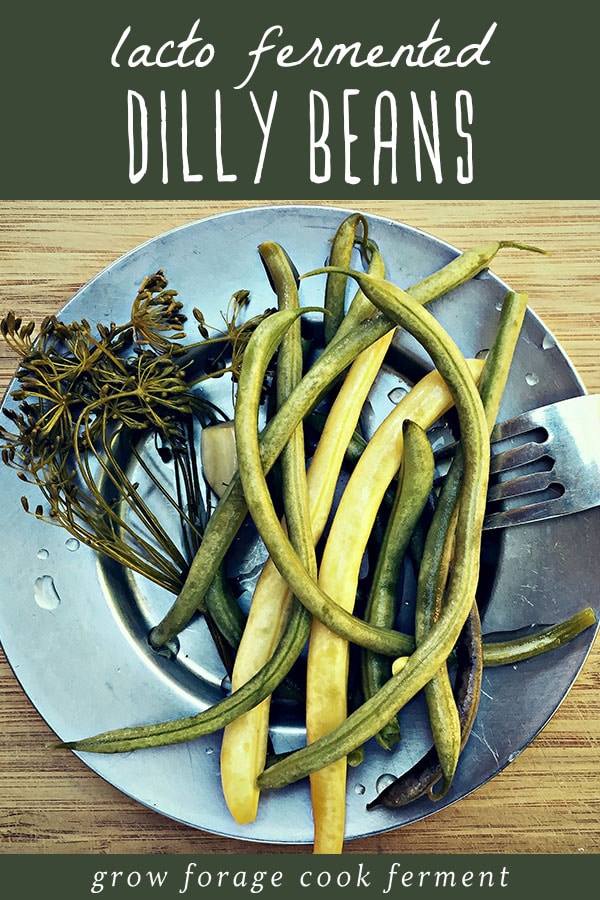
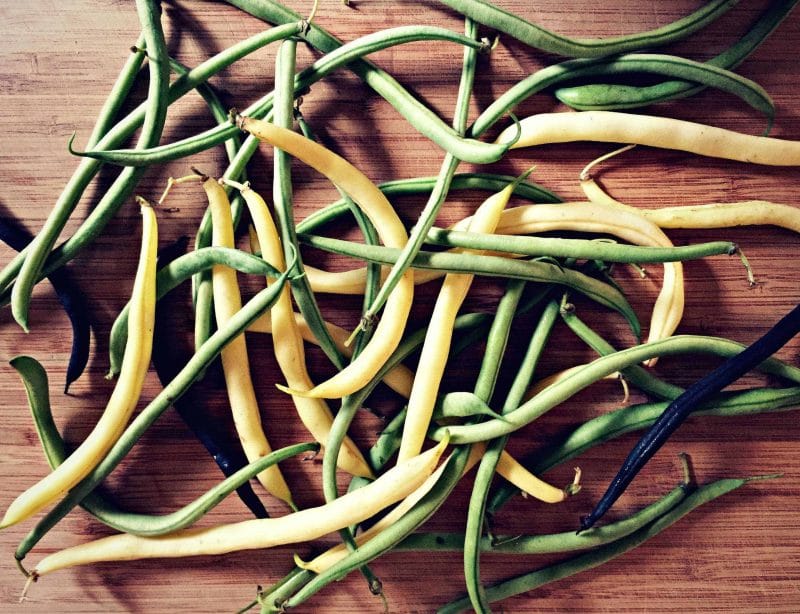
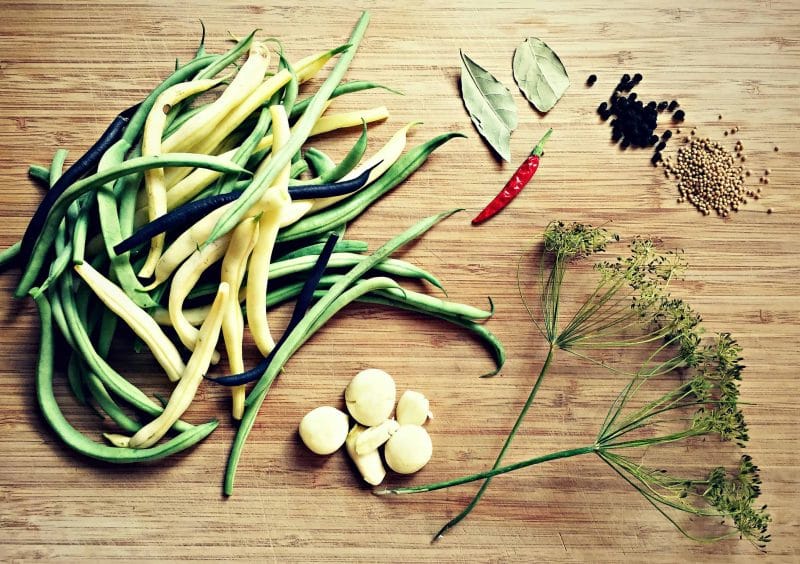
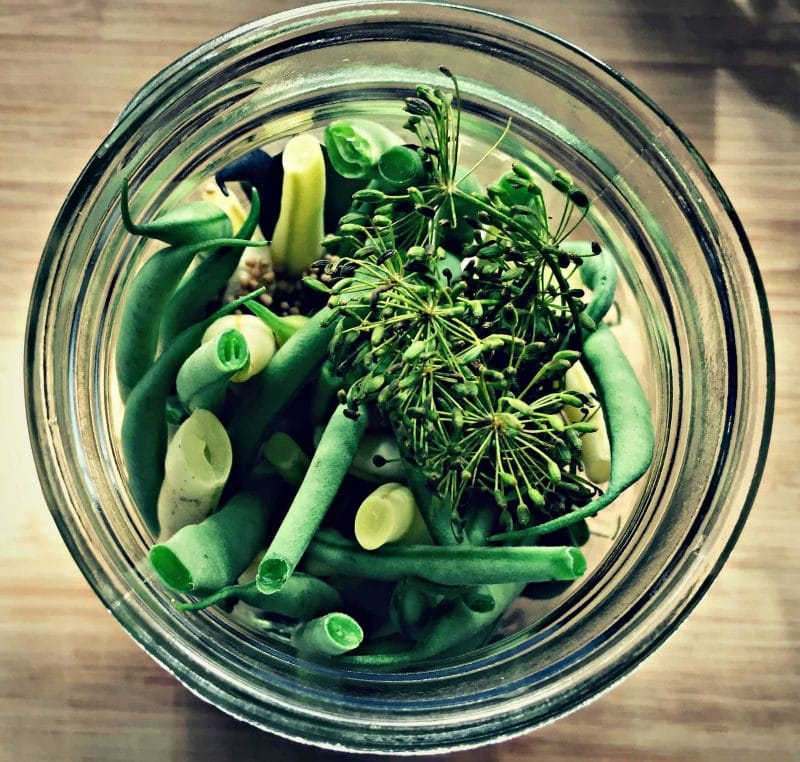
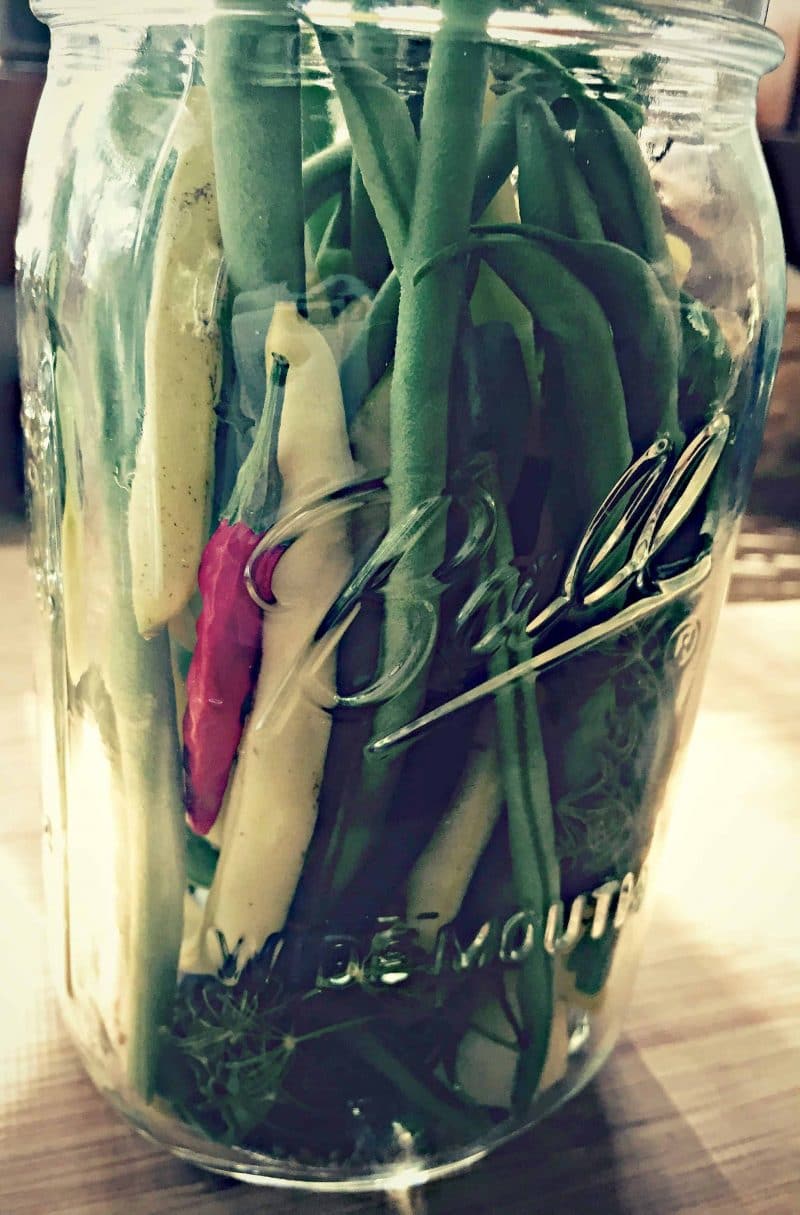
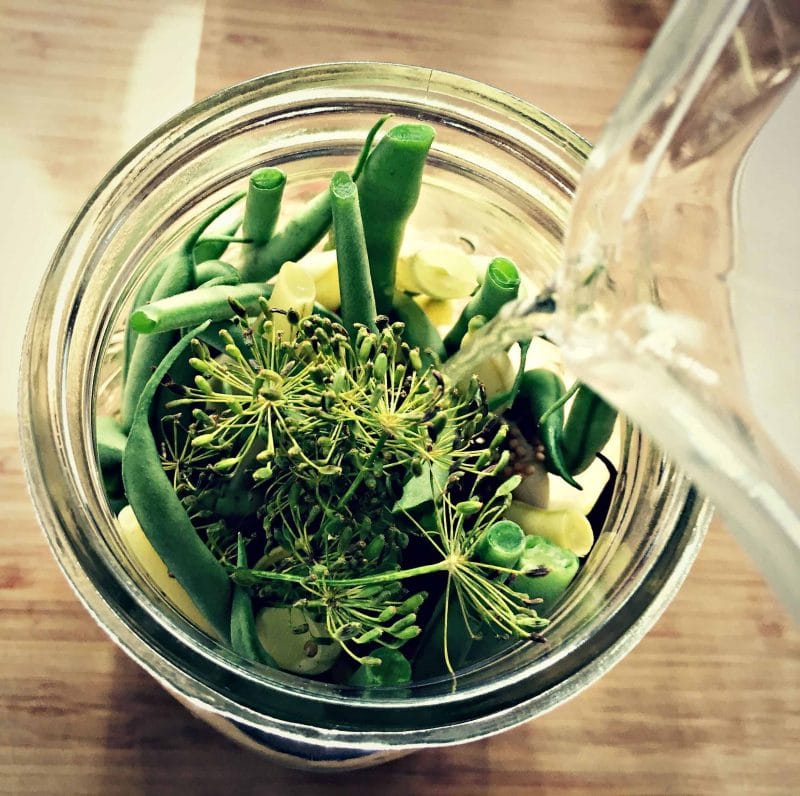
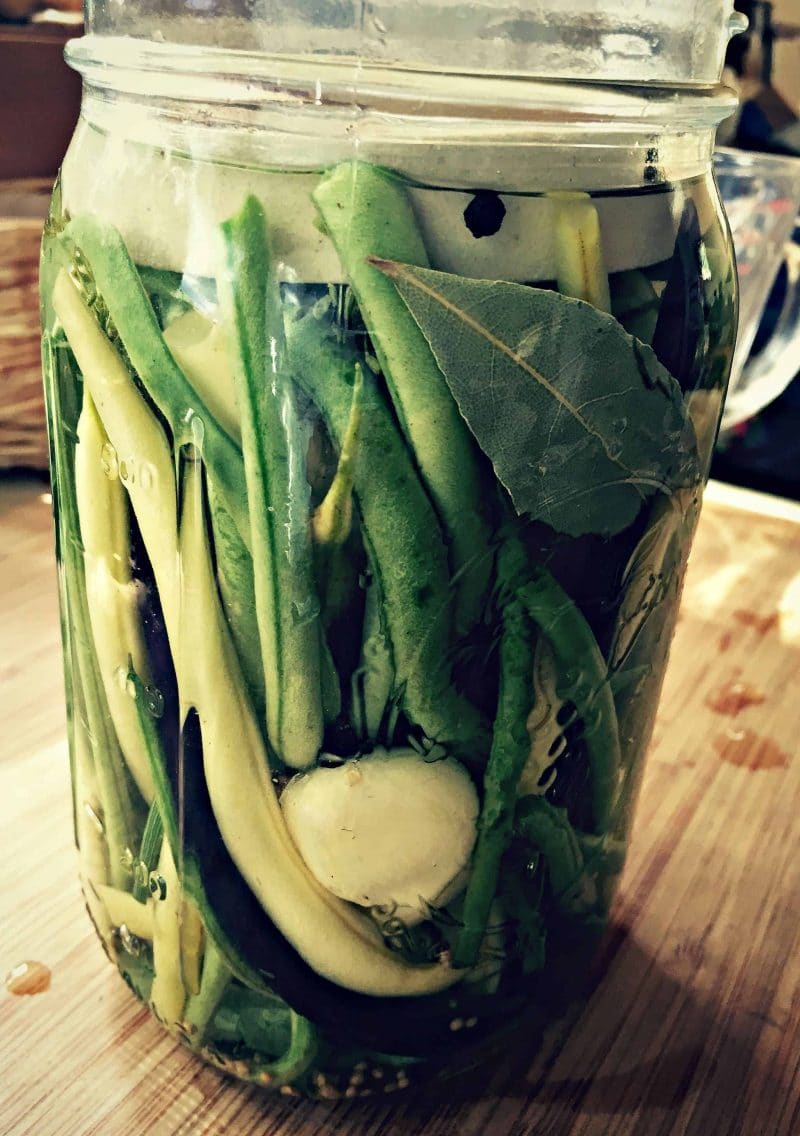
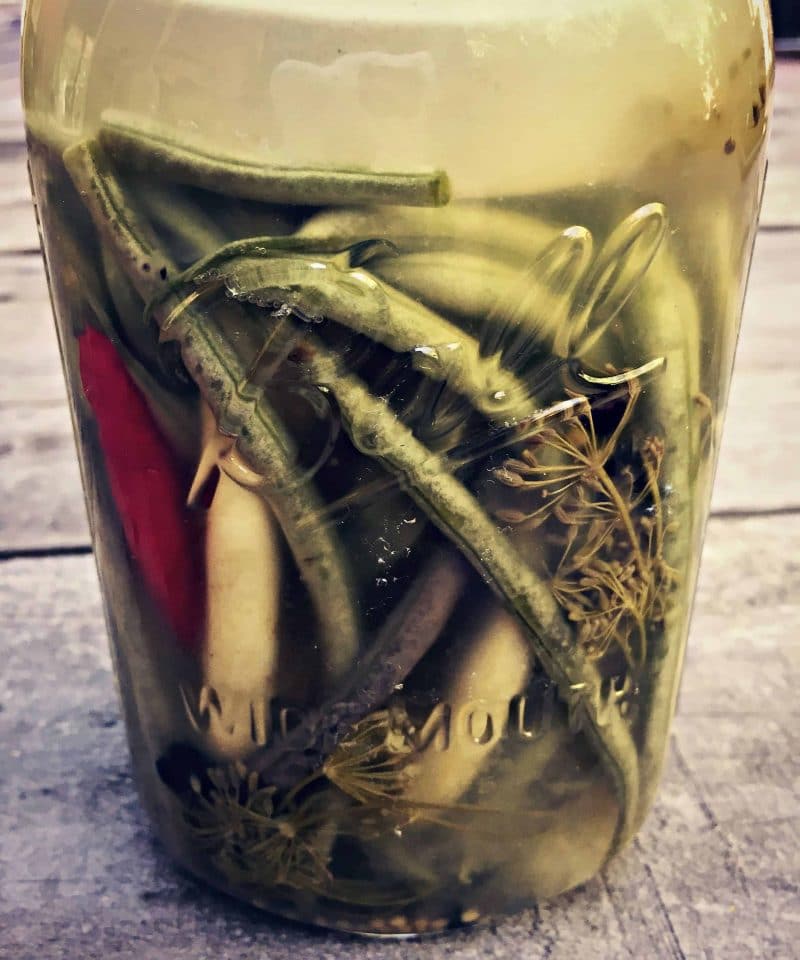
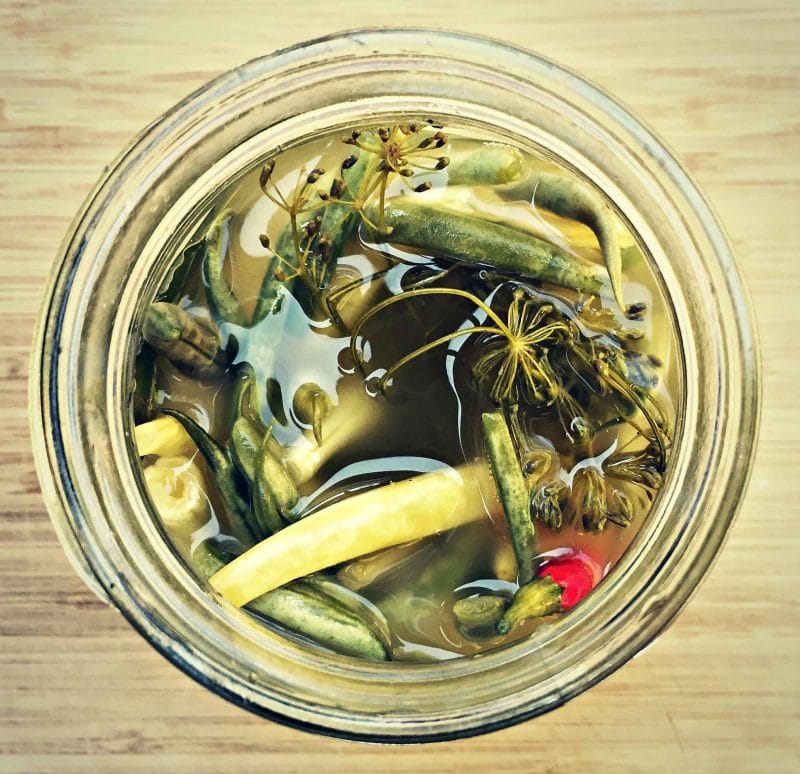
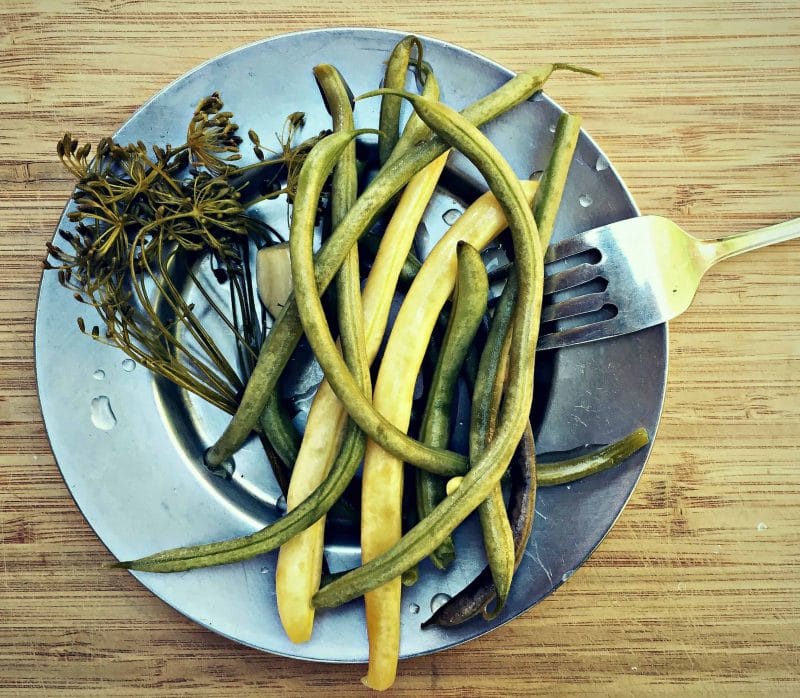
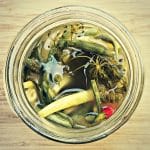

I may not have followed your recipe to a “T” and ended up having some mold on top. I have removed mold and trimmed off any beans that were sticking out of brine, put mason jar lids on and put 6 pints in refrigerator. I am nervous about eating this batch. Have tried a few nibbles and they taste perfect. Should I toss all these beans to be safe?
If the mold you skimmed off was white, it was actually kahm yeast (totally safe and edible), so they’re likely fine.
OMG these are amazing! I had a pound of green beans that I needed to do something with before going away for a week. They fermented on my counter for 8 1/2 days and taste just like sour pickles with a snappier texture. I will definitely make these again. Thank you!!!
Wonderful, Virginia! I’m so glad they turned out well.
Hi. I am wondering if you don’t put the lid on after using the fermenting weight. If I’m reading the instructions right, we just cover with a cloth and rubber band? No mason jar lids? Please clarify! Can’t wait to taste them. I love dilly beans and have never made my own before. Thank you.
Hi Karin. That’s correct, in the recipe I say that you can cover it with a cloth and a rubber band and no mason jar lid. Pressure builds up as your vegetable ferments so using a lid would offer no way for the gases to escape. There are a lot of lid kits you can also use. I really like this one: Easy Fermenter Wide Mouth Lid Kit
This is the only ferment that I seem to have an issue with. It turns out when we make it, meaning it doesn’t go bad, but it always tastes chlorine-like. What could we be doing wrong? We generally always use purified spring water from the store.
Hmmm… Are you sterilizing your fermentation vessel prior to using it? Are you using a fermentation weight on top of your dilly beans to keep them submerged? Before using glass fermentation weights, I used a zip-top bag filled with water and for some reason, I felt like they gave my ferment an off taste.
Q. Can you use frozen beans (or any vegetable) in the fermenting process?
I have whey from making yogurt. How would I use that in this recipe? Thanks!
Hi,
Can you make there’s without the mustard seeds?
In my experience fermenting all kinds of veggies, the spices/herbs are totally adaptable to your personal preference with no affect other than flavor on the ferment. What you can’t change is the salt water brine, that’s the important part, but add and subtract herbs at will! 😊
Please emphasize to the readers that the veggies done with lacto-fermentation will not have a shelf life the same as something which is canned. Suggested shelf life for lacto-fermented foods is 60 days in cool area at the most, with all which I have read…
Have you ever made kraut out of turnips instead of cabbage? A friend said it was very good. I thought I might give it a try.
Made these yesterday with green and purple beans… looks so pretty ????
I love this idea! I havn’t fermented much on my own but sauerkraut and a couple other things, so i’ve been inkling for something new to try! This looks like the perfect candidate. I am really curious to see how the flavor of the beans change once the end product is done. I am so excited to try this at home! Thanks for sharing!
Hi, I made these beans 4 days ago and just taste tested today and they are horrendously salty. Basically inedible. Will the salt dissipate as they continue to ferment? This is my first time making Fermented food and I have never tried dilly beans before so I really don’t have anything to compare too…
Hi Toby, it’s normal for them to be a bit salty to taste, but the salt is very important to the fermenting process. Give it more time, and once they are finished fermenting, refrigerate and taste them again. If they are still too salty, you can try removing some of the brine and replacing with fresh water. Hope that helps!
Hi ! Newby here. Do you have a recipe for dilly beans in a vinegar brine ? Last time I tried it, the brine wasn’t right. I lost my recipe. Thanks so much !